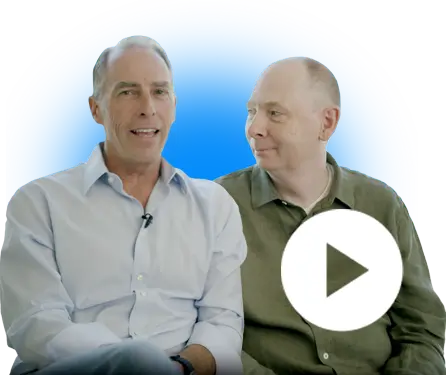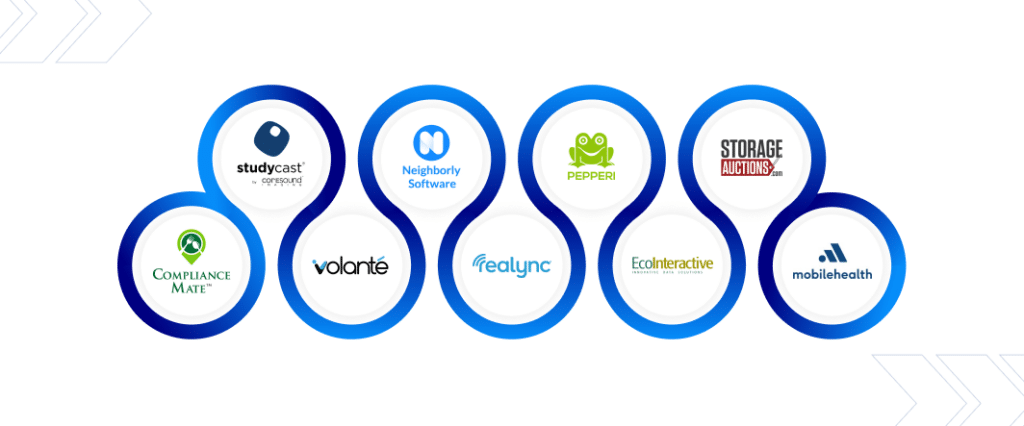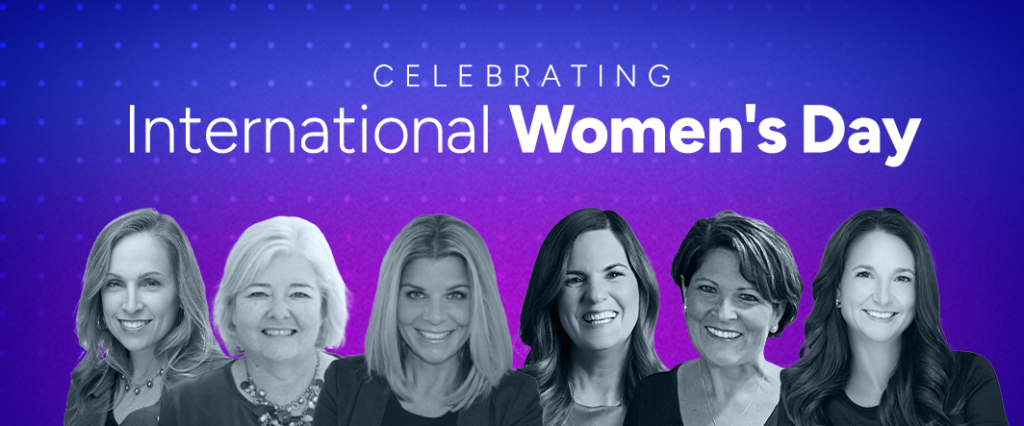Leveraging Social Proof for Growth: Essential Strategies for Software Companies

In a landscape crowded with innovative technologies and cutting-edge features, differentiating your software company hinges on more than just showcasing your product’s capabilities. It’s about demonstrating tangible value in a market teeming with alternatives. As a Chief Marketing Officer with a successful track record of employing social proof at Software Equity Group (SEG) and throughout my tenure in the software industry, I’ve witnessed first-hand how crucial social proof is in building trust, establishing credibility, and driving growth. For software leaders looking towards a future exit, understanding the strategic leverage of social proof is essential in enhancing your company’s attractiveness to potential buyers and investors.
Social proof, when effectively utilized through testimonials and case studies, transcends being a mere marketing gimmick. It’s not just about selling a product; it’s about selling a vision of success, backed by real world examples and satisfied customers. It evolves into a cornerstone strategy, promising a significant return on investment (ROI). In an environment where decision-makers are bombarded with options and claims, the quest for proof of beneficial outcomes becomes paramount. Real-world success stories not only empower software and SaaS companies to elevate their market presence but also serve as critical indicators of company health and potential growth to prospective acquirers, transforming skepticism into conviction and passive interest into actionable engagement.
This post delves into the multifaceted essence of social proof, highlighting how testimonials and case studies bolster your marketing initiatives and providing tips for seamlessly integrating them into your growth strategy, ultimately preparing your company for a more compelling and successful M&A journey.
The Spectrum of Social Proof
In the B2B software realm, social proof manifests in various forms, from brief client quotes and online reviews to elaborate video narratives and detailed success stories. These narratives share a common goal: they offer independent verification of your company’s value, cementing a crucial layer of trust and authenticity with your audience. When strategically crafted and shared, social proof navigates potential clients through the clutter, leading them straight to your offerings.
Each form of social proof has unique strengths, allowing you to present your success stories through diverse perspectives, reaching a wider audience.
Testimonials Versus Case Studies
Though testimonials and case studies underscore your product’s value and messaging via social proof, they differ in execution and detail.
Testimonials are concise endorsements from clients, usually spanning two to three sentences, and can be in written or increasingly popular short video formats. Unlike reviews on independent platforms, testimonials are curated and approved by the company, making them a cost-effective and versatile marketing tool.
Case Studies, or success stories, are in-depth narratives detailing a client’s journey from challenge to solution with your software. They cover the client’s challenges, the decision-making process, and the tangible results. Available in both written and video formats, case studies deepen credibility and connect emotionally with prospects by overcoming objections and highlighting real-world applications.
The ROI of Authentic Advocacy
Implementing social proof through detailed case studies and authentic testimonials is not just about adding a few quotes to your website. It’s an investment in crafting a narrative that resonates with potential customers, showing them a clear path from problem to solution to success. This narrative doesn’t merely attract attention; it showcases the sustained customer satisfaction and loyalty that are paramount for software leaders eyeing an eventual exit.
In my experience, well-crafted social proof significantly impacts your bottom line by enhancing conversion rates, accelerating the sales cycle, and boosting customer loyalty. But beyond these immediate benefits, it plays a crucial role in shaping the perception of your company in the eyes of future PE investors or strategic buyers. Companies that effectively leverage social proof demonstrate a robust customer base and product-market fit, two critical factors that can lead to a higher valuation during M&A discussions.
Here are a few other statistics that highlight the impact of social proof:
- HubSpot reports a typical visitor reads ten online customer reviews before buying something.
- Websites that include testimonials receive 45% more traffic than websites with no testimonials, according to Boast.io.
- Adding logos on a landing page can increase conversions by 400%, according to Conversion Rate Experts.
- Testimonials can increase conversions on sales pages by as much as 34%, according to reviewsonmywebsite.com.
- 56% of B2B tech vendors utilize review sites for social proof and customer references, according to financesonline.com.
Crafting Impactful Testimonials and Case Studies
Creating compelling social proof requires a blend of storytelling and factual evidence. Effective testimonials and case studies resonate by merging emotional engagement with complex data. They don’t just assert that your product is effective; they showcase its transformative impact on businesses.
Visual elements are crucial in making these stories captivating and relatable. Integrating visuals, such as graphs, charts, and videos, maintains interest and underscores critical achievements. Presenting these narratives in an appealing, digestible format is vital for capturing and keeping your audience’s attention.
Here are a few tips for harnessing social proof in your narratives effectively:
Testimonials
The best client testimonials are concise, direct, and impactful. They should spell out specific benefits and the value your customer has received from using your product. The use of powerful words and phrases like “growth,” “achieved,” “confident,” “peace of mind,” “secure,” “thrilled,” and “extremely happy” resonate emotionally with prospects, helping to drive them toward a buying decision.
Case Studies
As an in-depth exploration of how a particular customer successfully used your software to solve a problem or achieve a goal, a case study typically includes the following sections:
- Client Background: A brief introduction to the client’s business.
- Challenges: A brief discussion of the specific issues or pain points your client faced before purchasing your product.
- Solution: The specific features and benefits of your software and how they meet the client’s needs.
- Journey: The client’s process of searching for and identifying your solution,
through implementation, integration, and adoption. - Results and Impact: The tangible benefits are quantified where possible.
The most impactful success stories share a few common elements. They should be visually compelling—using bright color schemes, charts, graphs, icons, and illustrations to maintain the reader’s interest. Photos of your client’s products and headshots of key players are commonly used.
Sprinkling a handful (2-5) of direct client quotes throughout the case study adds authenticity and a personal touch. As with testimonials, power words, and phrases resonate emotionally with readers and can effectively complement quantifiable, complex data (if available) when sharing results.
Keep the narrative is concise yet informative to ensure your readers stay engaged. Focus more of the visual real estate on pain points, results, and quotes to deliver the most value.
How Software Companies Put Social Proof to Use
To help illustrate how these social proof best practices are used, here are a few real-world examples from the software industry:
Case Study 1: Activated Insights
Activated Insights is an employee and customer analytics platform for the U.S. senior care industry. The testimonials page on the company’s website is well-designed and executed. It presents short, visually appealing synopses of each client case study, with
a button to “learn more.”
Once you click through, you access a short-form, impactful case study in the traditional “challenge – solution – results” format. A sidebar summary provides readers with important information at a glance, and key stats on the client company are laid out along the top of the page.
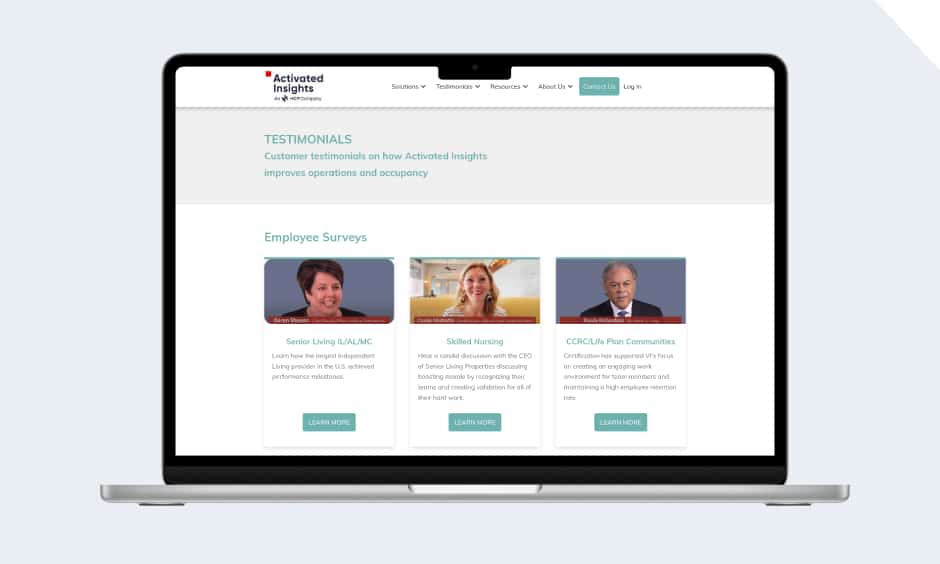
Why we like it:
- Prospects can see how other organizations have benefited from Activated Insights’ solutions, which builds credibility and validates the effectiveness of their services.
- The testimonials cover a wide range of scenarios, such as improving operations, boosting morale, enhancing employee retention, and quantifying the impact of Great Place to Work scores.
- Many testimonials include quantifiable outcomes, such as increased efficiency, reduced workers’ compensation expenses, and improved resident participation in surveys.
- The testimonials align with the company’s mission to enhance and build brands “from the inside out.”
Case Study 2: iOffice
Like Activated Insights, iOffice takes a clean, simple approach to sharing its success stories on its website.
iOffice publishes its client case studies on a dedicated “success stories” page under the “resources” tab. Visitors to the website can click on a thumbnail graphic featuring the client company’s logo and a one-sentence summary of the story. Once they click through, prospects are taken to the story presented in a long-form narrative format.
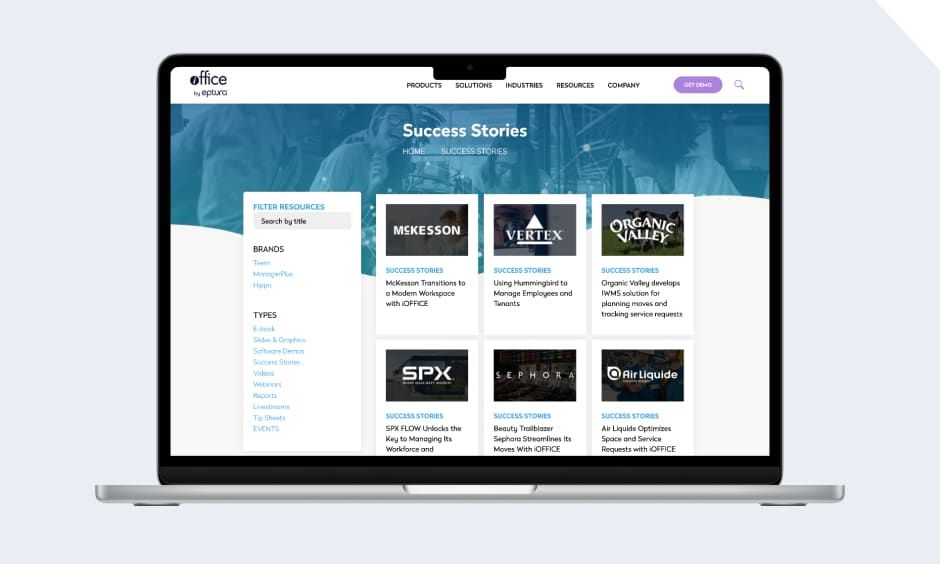
Why we like it:
- The stories highlight real-world success. The case studies share tangible results, including metrics like cost savings, efficiency improvements, and increased productivity, to show how clients have benefited from iOffice’s solutions.
- The layout has visual appeal. iOffice’s case studies feature a clean layout, impactful icons, and call-out quotes in a larger font. Prospects can see how other companies, like their own, have overcome challenges and achieved positive outcomes.
Case Study 3: SmartRent
The case studies section of SmartRent’s (acquired our former client SightPlan) website effectively demonstrates the significant value the smart home and property operations software company provides to companies in the real estate and property management industry.
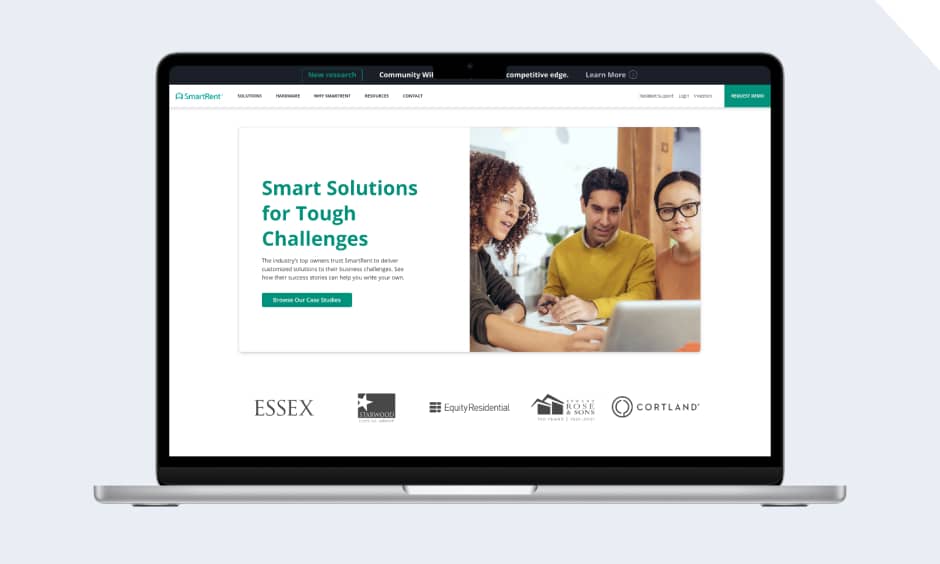
Why we like it:
- The case studies emphasize how SmartRent’s solutions make the leasing process more efficient.
- Hearing from peers in the industry resonates with prospective clients. SmartRent’s case studies include company representatives’ quotes, reinforcing their value propositions.
Need More Social Proof?
As we’ve explored throughout this post, social proof isn’t just a marketing tool; it’s a strategic asset that is essential for distinguishing your software company in a competitive market. By carefully crafting and presenting testimonials and case studies, we showcase our value and build a foundation of trust with potential clients. The result is a stronger brand, a more compelling value proposition, and accelerated business growth.
For software leaders looking towards enhancing their company’s value for a future exit, understanding, and leveraging the power of social proof is paramount. It positions your company as a leader in its domain and showcases the success and satisfaction of your customers. These elements can help attract new customers as well as potential buyers and investors, offering a glimpse into the sustainable growth and health of your business.
To further illustrate the transformative impact of social proof, I invite you to view more case study examples and learn about real-life M&A successes. Also visit our testimonials page to read what past clients say about working with Software Equity Group.
